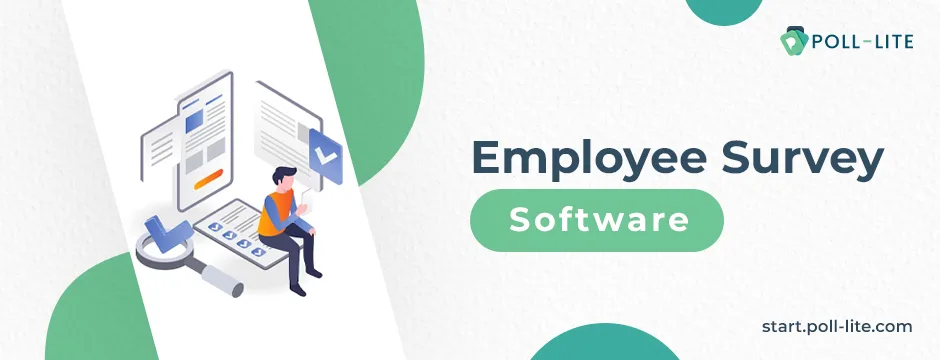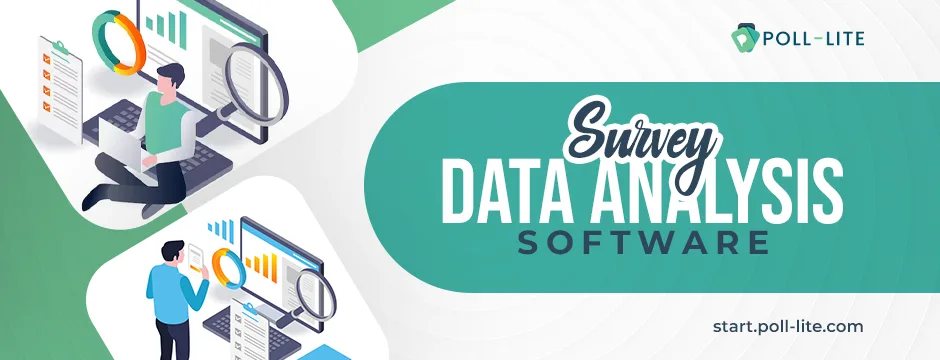Employee feedback has long been a cornerstone of organizational development and improvement. Gathering insights from employees can help companies make informed decisions, enhance employee engagement, and boost overall productivity. Traditionally, this feedback was collected through annual or semi-annual surveys, which often left employees feeling disconnected from the process and frustrated with the lack of real-time communication. However, the landscape of employee feedback is undergoing a significant transformation, thanks to the advent of innovative Employee Survey Software. In this article, we will explore the evolution of survey software and delve into the future of this essential tool.

The Traditional Approach to Employee Surveys
Before we dive into the future, it’s important to understand the past. Traditional employee surveys were typically conducted once or twice a year. These surveys were often long, time-consuming, and filled with questions that didn’t always resonate with employees. The feedback process was slow, and by the time the results were analyzed, the issues raised had often become outdated.
Moreover, these traditional surveys lacked the element of real-time feedback. Employees had to wait months before their concerns were addressed, and by then, their enthusiasm for the process had waned. The disconnect between employees and management was palpable, and the potential for meaningful change was limited.
The Rise of Software for Employee Survey
Recognizing the limitations of traditional surveys, organizations began turning to technology for solutions. Survey software for employees emerged as a game-changer in the feedback landscape. These software tools allowed companies to create, distribute, and analyze surveys with ease. Here’s how they revolutionized the process:
1. Real-time Feedback:
Software for the Employee survey introduced the concept of real-time feedback. Now, employees could provide input on their experiences, concerns, and ideas on an ongoing basis. This real-time aspect has proved invaluable in addressing issues promptly and keeping employees engaged in the feedback process.
2. Customization:
Unlike the one-size-fits-all approach of traditional surveys, employee survey software allows organizations to create customized surveys tailored to their specific needs. This customization ensures that the questions asked are relevant and meaningful to employees, increasing response rates and the quality of feedback.
3. Data Analytics:
One of the most significant advantages of survey software specially made of employee feedback, is its ability to analyze data quickly and effectively. Advanced analytics tools help organizations identify trends, pinpoint problem areas, and make data-driven decisions. This empowers organizations to take targeted actions to address employee concerns and improve workplace satisfaction.
4. Anonymous Feedback:
Many survey software platforms offer the option for employees to provide feedback anonymously. This anonymity encourages honest and open communication, as employees feel more comfortable sharing their thoughts without fear of repercussions.
5. Accessibility:
With the rise of mobile devices, survey software has become more accessible than ever. Employees can complete surveys from their smartphones or tablets, making it convenient and increasing participation rates.
6. Engagement:
Survey software often includes features that promote employee engagement. This can include gamification elements, leaderboards, and interactive dashboards that make the feedback process more engaging and enjoyable for employees.
The Current State of Employee Survey Software
Many organizations had adopted these tools and witnessed positive changes in their workplaces. However, the software landscape is continually evolving. Let’s explore the current trends and features in employee survey software:
1. AI and Machine Learning:
AI and machine learning have become integral to software for the employee survey. These technologies help in sentiment analysis, predicting employee attrition, and providing actionable insights based on the data collected. AI-driven recommendations enable organizations to make more informed decisions about employee engagement strategies.
2. Pulse Surveys:
While traditional annual surveys are still relevant, many organizations have adopted pulse surveys. These are shorter, more frequent surveys that capture real-time feedback on specific topics or events. Pulse surveys keep the feedback loop active throughout the year and enable quicker responses to emerging issues.
3. Integration with HR Systems:
Employee survey software is increasingly being integrated with other HR systems, such as performance management and talent acquisition platforms. This integration streamlines data sharing and allows organizations to create a more comprehensive view of the employee experience.
4. Action Planning Tools:
To bridge the gap between collecting feedback and taking action, survey software often includes action planning tools. These tools help organizations create and track action plans in response to survey results, ensuring that employee concerns are addressed effectively.
5. Mobile Apps:
Mobile apps for employee survey software have become more sophisticated, offering employees a seamless and user-friendly experience. Push notifications and mobile-friendly interfaces encourage higher participation rates and timely feedback.
The Future of Employee Survey Software
So, what does the future hold for software for the employee survey? Keep an eye on these thrilling advancements and emerging trends:
1. Predictive Analytics:
survey data analysis software will increasingly leverage predictive analytics to forecast potential issues and trends. By analyzing historical data and employee feedback, these tools can provide early warnings about factors that may impact employee retention or engagement.
2. Personalization:
The future of employee surveys lies in personalization. Software will become even better at tailoring surveys to individual employees, ensuring that the questions asked are relevant to their roles, experiences, and concerns.
3. Continuous Listening:
The concept of continuous listening will continue to gain traction. survey data analysis software will enable organizations to listen to their employees continuously, rather than relying solely on periodic surveys. This will involve a combination of pulse surveys, feedback mechanisms, and AI-driven sentiment analysis.
4. Integration with Employee Development:
Software for the Employee survey will not only focus on gathering feedback but also on supporting employee development. This could include personalized recommendations for training, mentorship, or career advancement based on an employee’s feedback and aspirations.
5. Enhanced Employee Experience:
As organizations prioritize the employee experience, survey software will play a crucial role in measuring and improving it. From onboarding to offboarding, software will help track the entire employee journey and identify opportunities for enhancement.
6. Collaboration and Feedback Loops:
Employee survey software will facilitate better collaboration between employees and management. It will enable employees to provide feedback not only on their experiences but also on the company’s strategies and initiatives. This fosters a sense of ownership and engagement among employees.
7. Emotional Intelligence Measurement:
Software may incorporate tools for measuring emotional intelligence within teams and organizations. Understanding and improving emotional intelligence can lead to better communication, collaboration, and workplace relationships.
8. VR and AR Feedback Collection:
As technology advances, we may see the integration of virtual reality (VR) and augmented reality (AR) into the feedback process. These immersive technologies can provide unique ways for employees to express their feedback and engage with surveys.
Visit the site of Poll-Lite and Explore the Quick Process of survey with their Impactful Software!
If you want to have a seamless survey, on your customer and employees, visit the site of Poll-Lite now. Time is the most important aspect in this decade of the twenty-first century. The survey software of poll-Lite, with a qualified usage of Artificial Intelligence, has made the process quick and authentic. In case of a quick and genuine survey, Poll-Lite is the top most name in the international context nowadays. Therefore, visit the site now and explore how this survey software works.

Conclusion
Employee survey software has come a long way from the days of lengthy, infrequent surveys. It has revolutionized the way organizations collect and utilize employee feedback, driving improvements in employee engagement and satisfaction. As we look to the future, we can expect even more innovation in this space, with predictive analytics, personalization, continuous listening, and enhanced employee experiences at the forefront. By embracing these developments, organizations can create more meaningful and productive workplaces for their employees, ultimately leading to greater success for both employees and the company as a whole.

